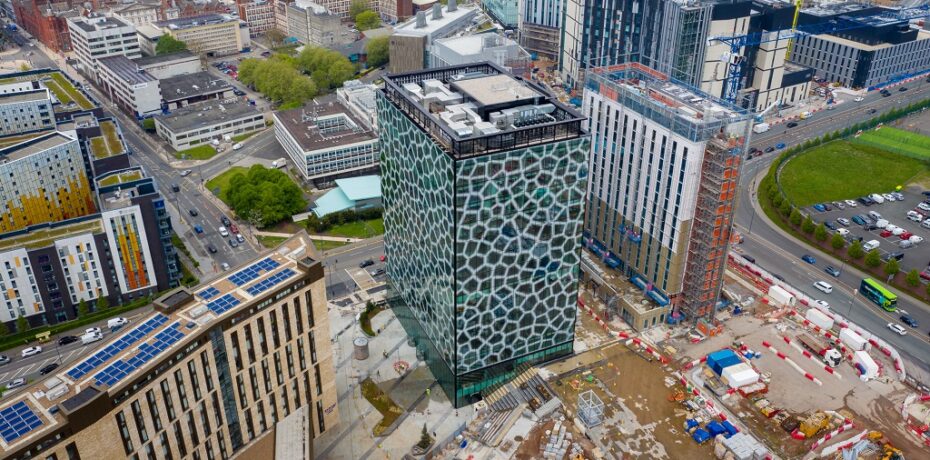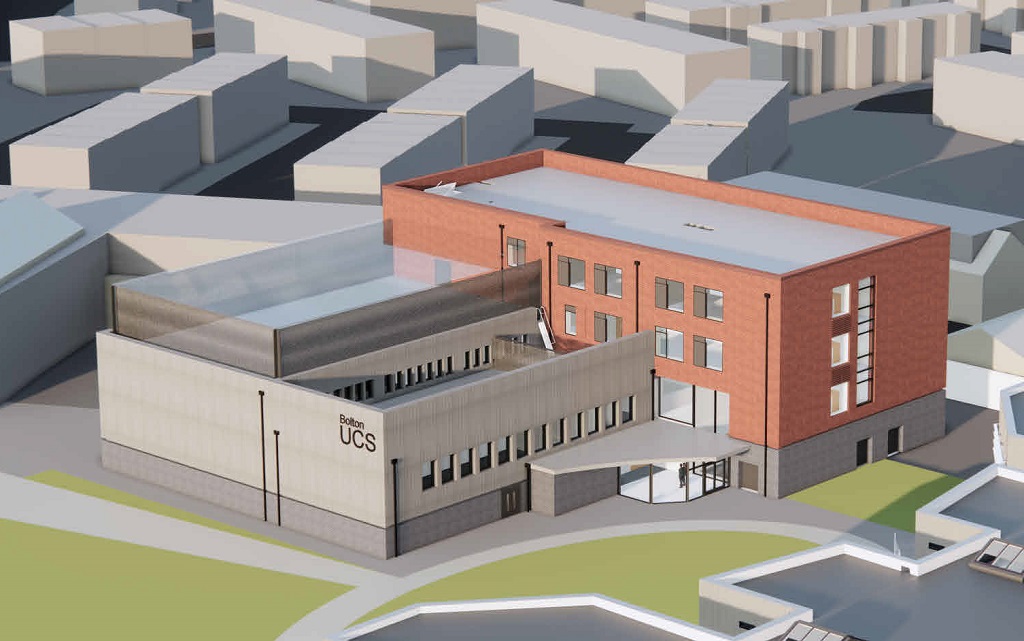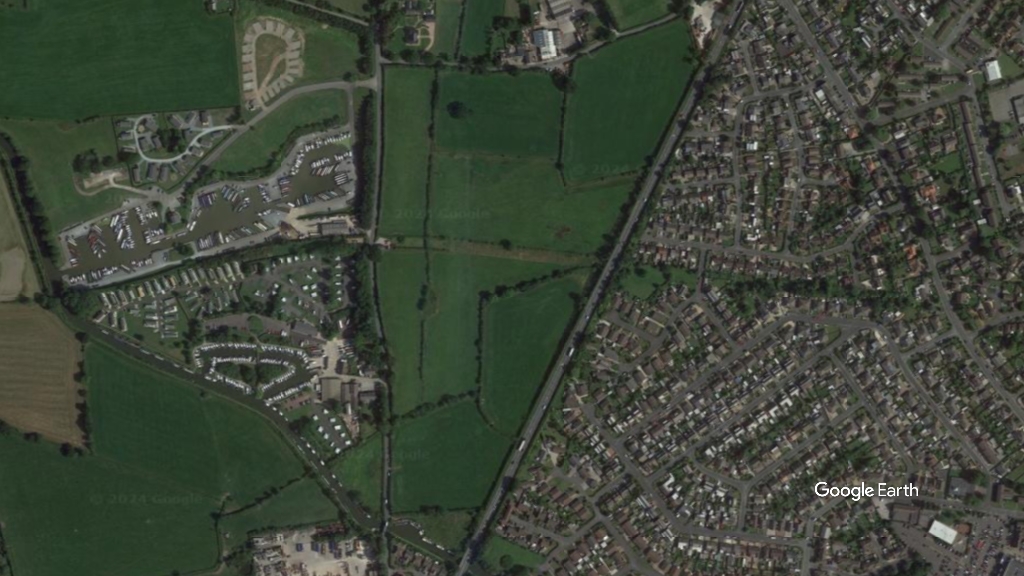The Subplot
The Subplot | Liverpool science, student housing
Welcome to The Subplot, your regular slice of commentary on the North West business and property market from Place North West.
THIS WEEK
- Liverpool offices reborn: how life sciences can breathe new life into the city’s workspace scene
- Students won’t pay: new data, shared exclusively with Subplot, helps explain why building more student housing in Liverpool isn’t a great idea

THE SPARK OF LIFE
Bioscience and Liverpool offices
Liverpool’s bioscience sector is shaping up to be the force behind the rebirth of the city’s office market. Has the city got the momentum it needs for success?
Liverpool could be, and should be, one of the world’s major science cities. A justly-famous school of tropical medicine and a massive veterinary education presence make it an ideal place to investigate zoonotic diseases (crossing between animals and humans). It could hardly be more topical. The 2017 arrival in Liverpool of the Royal College of Physicians, and their agreement to take 70,000 sq ft at Liverpool City Council’s £35m Spine development (pictured), confirmed the appeal. But that was four years ago, five since the RCP made its initial decision. You can’t trade on that single deal forever. Can the city maintain the momentum?
Old news
From the property point of view, the answer is encouraging. After a few fallow years things seem to be picking up. May saw the opening of the 160,000 sq ft Spine building, which will play host to the Royal College. The RCP is joined by Clatterbridge Cancer Centre, which has taken a floor. At least one big deal of around 50,000 sq ft is brewing, Subplot understands, with conversations expected to conclude soon. A series of other smaller occupiers are also in the frame, confirms Colin Sinclair, chief executive of Sciontec, the Bruntwood SciTech-backed spin-out company of KQ Liverpool tasked with overseeing the delivery of the quarter.
They’re looking
“People are viewing now. Everybody’s decision-making process is a bit post-pandemic, and everyone is approaching property differently, but it would be good to have someone in there in the next six months,” Sinclair says. The vibe suggests these deals are science-related, unlike the call centre that had been pencilled in.
You need balls
The next project for Sciontec will be the 120,000 sq ft Hemisphere development (No 4 Paddington Village). A contractor will be appointed any day, the funding is in place, and the £30m scheme should be completed by late 2023 / early 2024. Clearly, the 30-acre Paddington Village development is progressing confidently through the 1.8 m sq ft masterplan.
Village people
Morgan Sindall is lined up to deliver a 90,000 sq ft office building on plot five. Liverpool City Council has agreed to contribute £6.35m towards the construction of the next office during the current financial year and a further £15.2m in 2022/23, as Place North West reported earlier this year. “Today we have a massive opportunity for Liverpool because it is massively pre-eminent on life science,” says Sinclair. Everyone in the city hopes he’s right.
Local heroes
The danger for Liverpool is that it quickly mops up the supply of footloose science-type requirements and has to turn to less sciencey occupiers. The near-miss with the call centre points that way. If that moment comes then questions may have to be asked about its home-grown science infrastructure, and that could be uncomfortable.
Commercial conversion
The background to the growth of the life science sector is provided by the universities, and something here seems to be going wrong. It is a worry to those who market the city, and who have a stake in its office market, that the city’s student offer does not seem (yet) to translate into commercial benefits in the way that it has in Manchester and, perhaps more significantly, in Leeds. Leeds matters as a comparator because its student population is roughly the same as Liverpool’s – between 50,000 and 60,000 according to StuRents – and you might hope to see similar patterns of growth.
Straw in the wind
Unfortunately, you don’t. Liverpool’s rate of student recruitment is not great compared to Leeds. Data from Subplot’s friends at StuRents (see below) shows Leeds student numbers growing up 5.8% in 2018 and 4.7% in 2019, the most recent years for which data is available. Liverpool only managed 1.9% and 2.9% in those same years.
Legacy brand
This feeds into a wider marketing problem, according to city property players. The difficulty is the city’s legacy which hobbles attempts to reposition it as what it plainly is – a gorgeous waterfront city with a lot of media, tech and scientific potential, a place that has more in common with San Francisco than dreary old Leeds. If, somehow, something could be added to the Liverpool water supply which erased all memory of football and The Beatles, it might make the task easier. If that drug could be extended to the UK water supply, even better.
Backbone
That isn’t the kind of language The Spine’s backers would use, but you get the feeling they share the desire to break away from legacy branding. “Branding is such an important factor and we have to ask ourselves why Liverpool’s doesn’t get the commercial spin-offs and that’s a challenge,” says Sinclair. If the enormous effort going into providing Liverpool with top-of-class scientific real estate is to pay off, a series of wider issues need to be addressed first.
DRIVING THE WEEK
 Liverpool PBSA: paused
Liverpool PBSA: paused
Two weeks ago a Dubai-based investor paid £61.5m for the 735-bed Calico student housing scheme in Liverpool at a net initial yield of 5.75%. But developers, building out existing schemes, are not rushing to provide more stock. Why?
London-based Niveda Group had no trouble selling the Calico student housing block: modern en-suite accommodation in a good location attracted a premium price. But three recent data drops – from StuRent, Savills and Cushman & Wakefield – show that after the best part of a decade of reliable growth, new purpose-built student accommodation (PBSA) development in the city is now risky, thanks to a surge in supply and low rents.
The party’s over…
Liverpool is at the tail end of a PBSA development boom. Data from StuRents shows that Liverpool added the most PBSA beds of any student city in 2020/21, up 1,544, amounting to a 5.8% increase in supply in a single year. The latest surge adds more supply to a market that has already seen plenty. Cushman & Wakefield recorded a total of 26,997-bed spaces on offer to students in Liverpool for the 2020/21 academic year, making the city one of the largest markets in the UK.
…but the dancing carries on
More new beds will come. This year will see 2,158 added, including four new large-scale developments being introduced to the market: a 1,007-bed True Student development, a 574-bed CRM Student development, a 404-bed Prestige Student Living development and a 294-bed Urban Sleep development. Five more schemes follow in 2022/23. This adds to “increasing concern” about the volume of beds, says StuRents. The ratio of students to PBSA beds in the city is below two, thanks to the surge in development. In most cities it is more than two. That adds to concerns that the newly-built rooms can’t be filled at rents that work for the operators.
Don’t know when to stop
Add a lot of new supply to an already well-supplied market, and unless your student numbers are rising fast, this will inevitably put pressure on rents. There’s evidence this is happening. Rental growth of about 3% a year is typical in the UK PBSA sector, and the best Liverpool PBSA performs at this pace. But the city’s average is much lower, thanks to the large stock of older rooms. It is hard for developers to drive rental growth against this background. Cushman & Wakefield says an average en-suite rent of £130/week is significantly below that seen in Manchester and Leeds.
Other priorities
A rarely-explored data set explains the problem. Liverpool students budget to spend less on accommodation than students do in many other cities. Data from StuRes, shared exclusively with Subplot, shows that in a PBSA hot-spot like Nottingham individual students set themselves a budget that has risen gently from £130 a week in 2019 to £135 today. But in Liverpool the accommodation budget has been shrinking, down from £138 a week to £127. That is a reflection of the competitive market (students have lots of choice) and another good reason for developers to stay well clear. Liverpool students have plenty of cheap alternatives to expensive purpose-built space. Old-fashioned shared houses come in a lot cheaper than good-quality PBSA.
Spoiled for choice
The hope for developers is that new (en suite) student rooms can take bookings away from older, less-appealing PBSA. Their pitch be: why pad down the hall to a shared shower, when you could have one of your own? But, as we’ve seen, students seem disinclined to spend, and they have many other options (HMOs, city centre PRS apartments, older cheaper PBSA). As a result Savills puts Liverpool in its Lower Second class of PBSA locations (a long way below Manchester which gets a First).
Avoid new build
Alistair Kemp, associate director at Savills, explains: “Liverpool is an attractive place to buy good new PBSA, but it is difficult to make it stack-up for new build, unless you’re building at scale and right next to the campuses. But it involves risk. And as a whole in the UK there are lower hanging fruit than Liverpool where it is easier to meet your return on capital requirements.”
Go somewhere else
This is the consensus view. David Feeney, UK student accommodation advisory lead at Cushman & Wakefield, says: “Unless you have an absolutely A1 site in Liverpool, why would you compete in the most well-supplied PBSA market in the country? There’s a lot of supply. Some developers have not looked properly at the supply-demand dynamics.”
The second wave
The good news is that markets correct themselves. As surely as Liverpool PBSA is now on a downward curve, it will bounce back. Richard Ward, head of research at StuRents, says: “Liverpool will see its second wave. We’ve already seen this in places like Birmingham, where they went through their peak in 2015-16, then slowed down, and it is now picking up again, and in Newcastle where supply dried up but it is also beginning coming back.”
Conclusion: let Liverpool’s PBSA market cool, and by the second half of the decade it could be roaring again.
The Subplot is brought to you in association with Cratus, Bruntwood Works, Savills and Morgan Sindall.






I don’t think developers particular care about whether the market is cooling or not, as they’re just jumping on the bandwagon to make a quick profit. You’ll notice that the large majority of PBSAa are local developers and contractors who haven’t been established for very long. They will keep on building so long as international investors keep on loaning.
I personally think it’s obscene the heights PBSA has reached here (born and bred 40 years). Even terraced housing is getting turned into HMOs for students, thus decreasing the rental stock available for couples and families to affordable rent, it is literally ridiculous how expensive renting has become here in the last several years in particular.
By Anonandon